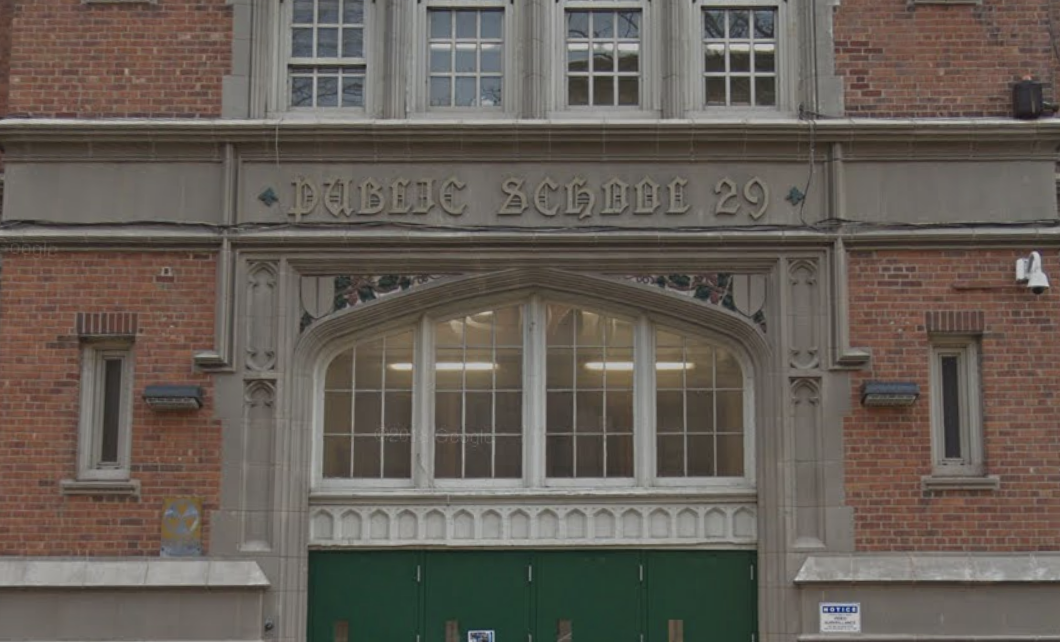D15 May Rezone Elementary Schools To Boost Diversity And Enrollment


By Christina Veiga, Chalkbeat
PARK SLOPE – On the heels of sweeping admissions changes aimed at integrating middle schools, District 15 in Brooklyn could soon redraw elementary school attendance boundaries as well.
The education department is floating possible zone changes that could affect which students attend seven schools in the northwest corner of the district, including some of the area’s most sought-after, such as P.S. 29 and P.S. 58.
The aim is to even out enrollment across campuses, some of which are currently overcrowded and some of which are under-enrolled — and also to boost student diversity in a deeply segregated district.
“We’re at the beginning of a community-driven rezoning process in District 15 to address the overall needs of students and families,” education department spokesman Doug Cohen wrote in an email. “We look forward to continued dialogue over the coming months.”
There are no firm proposals on the table yet, but the education department is looking to fill more than 400 new school seats created by an addition to P.S. 32, which may require drawing a substantially larger attendance zone around the Carroll Gardens school.
The city may also consider changes to the zones for P.S. 15 in Red Hook and P.S. 38 in Boerum Hill in order to fill unused seats and “promote diversity,” according to education department documents. The schools are currently among the most diverse in the area — though compared with the district averages, white students are underrepresented at both, and there are significantly fewer Asian students at P.S. 15.
Another aim: to relieve overcrowding at P.S. 29 in Cobble Hill and P.S. 58 in Carroll Gardens and also spur integration. Both enroll far more white students and affluent students than the district average and benefit from powerhouse parent organizations that have recently been among the richest in the country.
White enrollment at both schools is 74%, compared with the district average of nearly 31%. And less than 15% of the students at both schools come from low-income families, compared with the district average of about 55%.
Elementary school rezonings are often fraught — as evidenced by recent efforts in nearby District 13 and in District 3 in Manhattan, which garnered intense backlash.
But there’s a precedent for District 15 taking bold steps: advocates there shepherded one of the most far-reaching integration plans in recent years in New York City. After more than a year of community discussions, the district chose to do away with competitive admissions screens in all of its middle schools, which are often blamed for exacerbating segregation. Preliminary enrollment numbers show the changes, now in their first year, have the promise to increase diversity at many schools.
“We have heard a lot of different perspectives on how the rezoning could take place,” the Community Education Council President, Camille Casaretti, wrote in an email. “However the implementation happens, the goal for this rezoning would be to improve learning conditions while promoting diversity and integration in our elementary schools.”
Other elementary schools that could be affected by the rezonings include The Brooklyn New School, P.S. 261, and Red Hook Neighborhood School. Along with redrawing attendance boundaries, the city is considering new admissions priorities to help integrate schools, according to city records.
Any changes are expected to go into effect for the 2020-2021 school year and apply to pre-K, kindergarten and students new to the district. But if students have an older sibling at a school that changes its attendance zone, they will be grandfathered into that school.
The education department has already held a number of meetings at local schools that could be affected by the potential changes to collect feedback from parents and community members. The next meeting is expected to be held at 6:30 p.m. on June 20 at P.S. 32.
“For us, our main priority is to get feedback from the community,” said Community Education Council member Elena Romero.
Ultimately, it’s up to the education department to propose any changes, and city documents show an initial plan is expected by June. The local Community Education Council is responsible for approving or rejecting any redrawn zone lines.
Chalkbeat is a nonprofit news site covering educational change in public schools.




